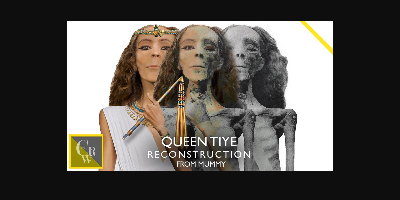12 янв 1353 г. до нашей эры - Sculptor Bek influence on rise of naturalism
Описание:
During the Amarna Period of ancient Egypt, a distinct style known as Amarna naturalism emerged under the reign of pharaoh Akhenaten (c. 1353–1336 B.C.).Sculptor Bek was a key figure and leading innovator in this artistic revolution.
Amarna naturalism Breaking from centuries of rigid artistic convention, Amarna naturalism was a short-lived but significant period of ancient Egyptian art characterized by a more fluid, lifelike style.
Realistic depictions: Artists depicted figures with more natural proportions, though often exaggerated. Royal portraits, for example, showed figures with elongated limbs, narrow faces, and rounded stomachs, which were features also seen in art depicting earlier royalty.
Emphasis on the human body: For the first time, figures were shown with a greater sense of movement and physical reality. Bek's stele, for example, depicts him with a protruding stomach, a detail that broke from the previously idealized figures of elite Egyptians.
Intimate royal scenes: The new style brought a more personal and intimate look into the lives of the royal family. Reliefs and paintings showed Akhenaten and his family in informal settings, engaging in activities like hunting or showing affection.
Sculptor Bek
Bek was the chief royal sculptor during Akhenaten's reign, leading the artistic transformation at the new capital city of Akhetaten (modern Amarna).
Familial tradition: Bek was the son of Men, who was the chief sculptor under Akhenaten's father, Amenhotep III. This background placed Bek in a prime position to carry out the pharaoh's artistic and religious vision.
Royal connection: According to inscriptions on his stele, Bek was personally instructed by Akhenaten, with the stele stating that Bek was "the apprentice whom His Majesty taught". This connection allowed Bek to direct artisans in reflecting Akhenaten's radical changes.
Depiction of the pharaoh and Aten: One of Bek's notable works is a stele found in Aswan, depicting Bek and his father, Men, with their respective pharaohs. The side showing Bek with Akhenaten presents the pharaoh offering to his sole god, Aten, in the new artistic style.
The stele of Bek and Taheret
This object is a prime example of Amarna naturalism and Bek's work.
Depiction of Bek and his wife, Taheret: The stele features the sculptor and his wife seated in a manner that, while formal, uses a more natural rendering of their bodies.
Emphasis on status: Bek's rounded stomach is a detail that indicated his high status, as being well-fed was a sign of wealth in ancient Egypt.
Artistic influence: The stele showcases the mix of naturalistic and mannered elements that defined the period, with a clear departure from the strictly formal proportions of earlier eras.
Добавлено на ленту времени:
Дата:
12 янв 1353 г. до нашей эры
Сейчас
~ 3381 г назад
